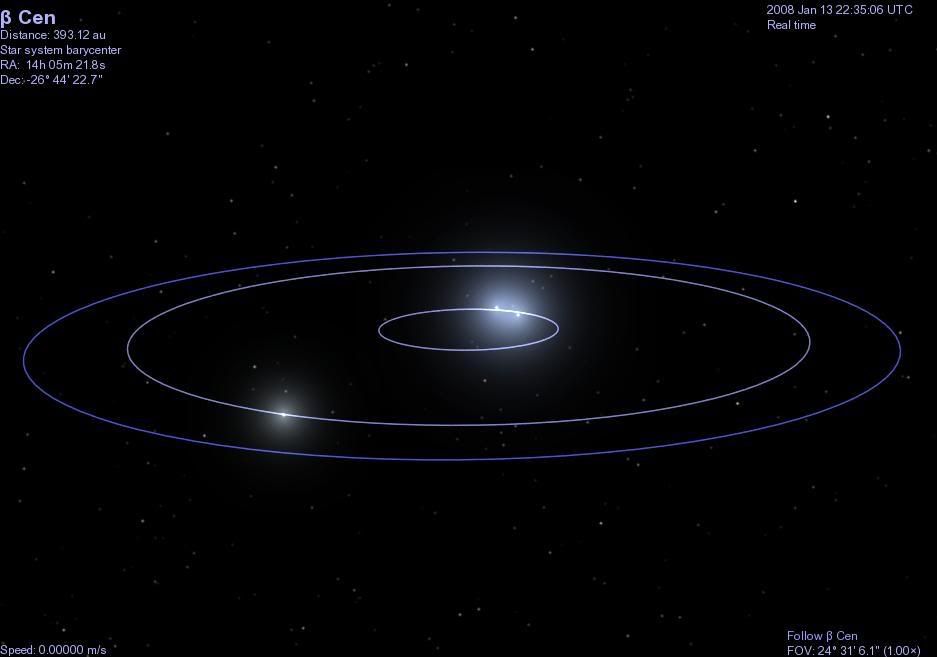To view orbits, press the 'o' button.Slartibartfast wrote:How do you get it to show those happy, sparkly orbits of the stars?
An object with a specular map will have specular effects from both stars. If you would like an picture to elabourate, let me know.Slartibartfast wrote:Can you make that third star shine on a planet (ala specular power and all that shiny stuff
I'll be here to helpHow do I make my planet orbit the barycenter wrote:Will make it orbit the primary barycenter.Code: Select all
"Hadar I" "BET Cen"Will make it orbit the AA / AB barycenter.Code: Select all
"Hadar I" "BET Cen A"
When you had it set to orbit Hadar, it orbited only one star, BET Cen A. This is because the original STC in your data folder declares star HIP 68702 as Hadar. In this newer STC, only BET Cen AA is defined as HIP 68702. (The number before the name gives Celestia an HIP number so you can override Celestia's default stars, the numbers are not required, so non HIP-stars can be added). Since you set it up for the planet to orbit Hadar, Celestia recognized Hadar as HIP 68702, which Celestia recognized to be BET Cen AA in our STC here. To fix this, you can either erase the number (68702) before "Bet Cen AA" and place it right before "BET Cen", or you can modify the SSC file to place the planet in oribt of "Bet Cen". This shall make it orbit the barycenter of the system. Furthermore, if you give it the exact same orbital parameters of BET Cen B, then add or subtract (360/6) = 60 degrees from it's ArgOfPericenter (or in the case of your SSC, LongOfPericenter), that'll place the planet in the Lagrange point you wish.
Celestia does not supply temperatures for planets orbiting a barycenter, so it will give it 0 K. I guess the best thing to do is give it an Earth-like map or something to let people know it's habitable.Slartibartfast wrote:I may need help, but I'm going to do my best to do it on my own to show I've learned something at all from our chat. =)
Regulus, eh? Missing orbital data can be worked around with mathematics. For example, if you know the seperation and their masses, you can do a bit of math to poke at it's orbital period. Whether or not you want to ignore the orbital periods of the stars is up to you. I have some stars that take a few tens of thousands of years to complete an orbit, but have included them for completeness.

